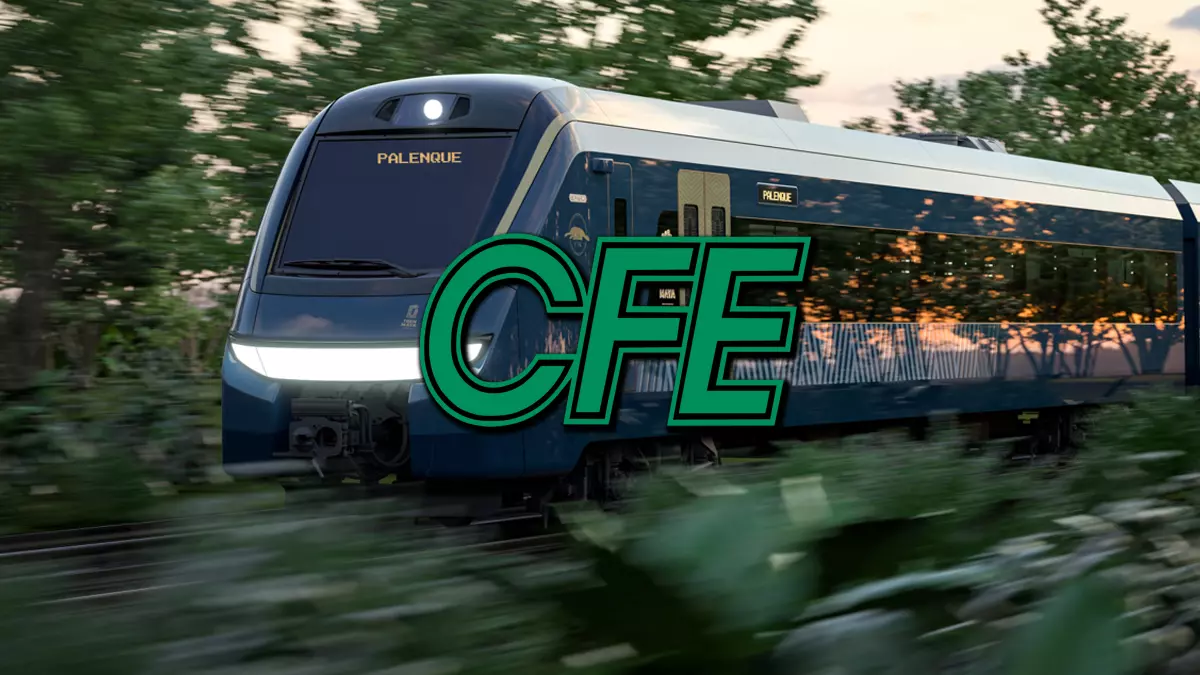CFE advances in Plan of Electrification on the Mayan Train Route
The Federal Electricity Commission (CFE) has announced that it is advancing in the consolidation in plan of electrification on the Mayan Train route.
The general director of the CFE, Manuel Bartlett Díaz, has informed that they are working on the development of a comprehensive system focused on the electrified line, which will begin at the Mérida-Teya station of section 3 of the Mayan Train.
This electrification project will extend for 690 kilometers in sections 4, 5 and 6, and will reach Chetumal, Quintana Roo, which represents 44% of the total route of the work.
In addition, two combined cycle plants are being built in Valladolid and Mérida, with a joint generation capacity of 1,519 megawatts.
A total of 53 constructions are underway in Yucatan, in order to guarantee the connection, power and voltage control of the railway.
In March 2024, the tests of the power plants will begin, while the evaluations of the seven traction stations will be carried out between May and November of this year.
Progress of the electrification on the Mayan Train route
The construction of the seven tractor substations is also advancing.
- Substation 1, which has seven works, is 82% complete.
- The six substation 2 works are 89% complete.
- Substation 3, with six works, is 73% complete.
- Substation 4, with seven works, is 16% complete.
- Substation 5, with ten works, is 15% complete.
- Substation 6, with ten works, is 20% complete.
- Finally, substation 7, with seven works, is 24% complete.
Also, 27 power substations are being built along the railway routes and highways, in which green screens containing native plants will be planted and 13,000 square meters of land will be recovered with 2,300 trees and shrubs belonging to eight varieties of the area. .
Likewise, 49 adaptation projects have been completed at 78 points where railway tracks cross high-voltage lines, while another 3 similar projects are being built and 26 are in the design stage.
In relation to the construction of the Mayan Train, section 3 covers 72 kilometers of completed railway, which crosses 15 towns and 32 municipalities of Yucatán and Campeche.
Currently, the project generates 11,000 jobs in the construction of three elevated, 118 pedestrian crossings, for vehicles and animals, as well as 68 cross drainage systems.
With regard to the necessary materials, the supply of rails is 100% assured, while the production of sleepers and ballast progresses adequately.
To expedite the arrival of ballast and other supplies for the Mayan Train, the construction of four duques de alba has been completed at the Beacon Dock, in Puerto Progreso, Yucatán.
Azvindi’s main manager, Manuel Muñoz, has specified that the embankment, which comprises a volume of more than 4 million cubic meters, has been fully completed. Dirt roads covering 160 kilometers have also been completed.
This project, which contemplates an investment of more than 100 billion pesos, is one of the main commitments of the Mexican government to boost the economy and tourism in the southeast region of the country.
The Mayan Train will become one of the main means of transportation in the area, connecting the states of Yucatan, Quintana Roo, Campeche, Chiapas and Tabasco.
The work also has a focus on sustainable development, since it seeks to protect and preserve the flora and fauna of the region. For example, 2,300 trees and shrubs of eight native species have been planted in an area of 13,000 square meters.
In addition, green walls with native flora are being built in the electrical substations that are being built along the train route. In short, the Mayan Train is a large-scale work that involves multiple institutions and sectors of society.
The CFE, as one of the entities involved in the project, is advancing in the consolidation of electrification on the Mayan Train route.
With the completion of the seven tractor substations and the construction of the combined cycle plants in Valladolid and Mérida, an important boost will be given to the supply of electricity in the region.
On the other hand, the construction of the Mayan Train is generating jobs and boosting the local economy, which will undoubtedly contribute to the development of the region. Likewise, work is being done to care for the environment, with the planting of trees and the construction of green walls with native flora.
The CFE advances in the consolidation of the electrification on the Mayan Train route, which will allow the supply of electricity along the train route.
In addition, multiple actions are being carried out within the framework of the construction of the Mayan Train, with the aim of boosting the local economy, generating jobs and protecting the environment. All this makes this project a key work for the development of the Mexican southeast.
Similar post to Electrification on the Mayan Train route:
- Mayan and Interoceanic Train Would Connect with Central America
- Mayan Train Boosts Real Estate Development in the Southeast
- Urban Development Triggers Extreme Heat not the Mayan Train
Let us know in the comments your opinion about electrification on the Mayan Train route
Not what you’re looking for?
try a search







Subscribe to be able to comment and be part of the community.